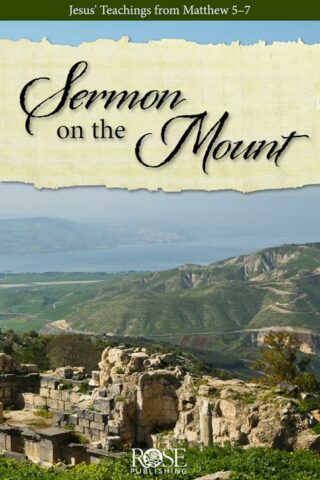Karl Barths Infralapsarian Theology
$40.99
Foreword By George Hunsinger
Acknowledgments
Abbreviations
Introduction
Part I: Reappraising Barth’s Lapsarian Position
1. Supra- And Infralapsarianism In The Seventeenth Century: Some Definitions
2. Church Dogmatics 33: Barth’s Lapsarian Position Reassessed
Part II: Barth’s Lapsarian Position In Development, 1920-1953
3.Romerbrief II (1920-1921): Lapsarianism In The “Impossible Possibility” Dialectic
4. The Gottingen-Munster Period (1921-1930): Christology And Predestination In The Subject-Object Dialectic
5. The Bonn Years (1930-1935): Human Talk And Divine Word-New Developments?
6. Gottes Gnadenwahl (1936): Infralapsarian Aspects Of Barth’s Christocentric Doctrine Of Election
7. CD II/2 (1939-1942): Christ As Electing God And Elected Human-Lapsarianism “Purified”
8. CD IV/1 (1951-1953): Adamic History And History Of Christ-Infralapsarian Tendencies In Barth’s Doctrine Of Sin
Conclusion
Bibliography
Author Index
Subject Index
Additional Info
Theologians have long assumed that Karl Barth’s doctrine of election is supralapsarian. Challenging decades of scholarship, Shao Kai Tseng argues that despite Barth’s stated favor of supralapsarianism, his mature lapsarian theology is complex and dialectical, critically reappropriating both supra- and infralapsarian patterns of thinking. Barth can be described as basically infralapsarian because he sees the object of election as fallen humankind and understands the incarnation as God’s act of taking on human nature in its condition of fallenness. Tseng shows that most of Barth’s Reformed critics have not understood his doctrine of election accurately enough to recognize his affinity to infralapsarianism and, conversely, that most Barthians have not understood Reformed-orthodox formulations of election with sufficient accuracy in their disagreement with the tradition. Karl Barth’s Infralapsarian Theology offers a clear understanding of both the historic Lapsarian Controversy and Barth’s distinct form of lapsarianism, providing a charitable dialogue partner to aid mutual understanding between Barth and evangelicals.
in stock within 3-5 days of online purchase
SKU (ISBN): 9780830851324
ISBN10: 0830851321
Shao Kai Tseng
Binding: Trade Paper
Published: March 2016
New Explorations In Theology
Publisher: InterVarsity Press
Print On Demand Product
Related products
-
Grief Recovery Handbook (Anniversary)
$17.99Newly updated and expanded to commemorate its 20th anniversary-this classic resource helps people complete the grieving process and move toward recovery and happiness
Incomplete recovery from grief can have a lifelong negative effect on the capacity for happiness. Drawing from their own histories as well as from others’, the authors illustrate how it is possible to recover from grief and regain energy and spontaneity. Based on a proven program, The Grief Recovery Handbook offers grievers the specific actions needed to move beyond loss.
New material in this edition includes:
How to choose which loss you should work on first
How to deal with growing up in an alcoholic or otherwise dysfunctional home
Loss of faith
Loss of career
Loss of health
And much, much more.Add to cart7 in stock (additional units can be purchased)
-
7 Last Words
$18.99Based on his talks at New York’s St. Patrick’s Cathedral on Good Friday 2015, the New York Times bestselling author and editor at large of America magazine offers a portrait of Jesus, using his last words on the cross to reveal how deeply he understood our predicaments, what it means to be fully human, and why we can turn to Christ completely, in mind, heart, and soul.
Each meditation is dedicated to one of the seven sayings:
*”Father, forgive them, for they do not know what they do.”
*”Today you will be with me in Paradise.”
*”Woman, this is your son” . . . “This is your mother.”?
*”My God, my God, why have you forsaken me?”?
*”I thirst.”?
*”It is finished.”?
*”Father, into your hands I commend my spirit.”With the warmth, wisdom, and grace that infuse his works, Father James Martin explains why Jesus’s crucifixion and death on the cross is an important teaching moment in the Gospels. Jesus’s final statements, words that are deeply cherished by his followers, exemplify the depth of his suffering but also provide a key to his empathy and why we can connect with him so deeply.
Add to cart1 in stock
-
Great Divorce
$17.99C.S. Lewis takes us on a profound journey through both heaven and hell in this engaging allegorical tale. Using his extraordinary descriptive powers, Lewis introduces us to supernatural beings who will change the way we think about good and evil. In The Great Divorce C.S. Lewis again employs his formidable talent for fable and allegory. The writer, in a dream, finds himself in a bus which travels between Hell and Heaven. This is the starting point for an extraordinary meditation upon good and evil which takes issue with William Blake’s The Marriage of Heaven and Hell.
Add to cartin stock within 3-5 days of online purchase
-
God For The Rest Of Us Pastors DVD Kit
$19.99The Pharisees called Jesus “a friend of sinners.” He took it as a compliment. Would you? In these resources, Pastor Vince Antonucci and his unusual church that reaches out to people on the Las Vegas Strip explore a powerful question: what if God is not just for the faithful, church-going, or holier-than-thou types – what if God is for the rest of us? This small group study expands viewpoints, overcomes stereotypes, and models how to really love people like Jesus does. The Pastor’s Kit includes everything needed to plan a six-week teaching series around the concepts presented in the Small Group Study. It includes:
Special video message for pastors
Video guide for implementing a church-wide program
Six sermon outlines
Six short video clips to accompany each week’s sermon
Six sermon bumpers (short video clips to introduce each week’s sermon)
Digital art files to use in creation of bulletins and other promo materialsAdd to cartin stock within 3-5 days of online purchase
















Reviews
There are no reviews yet.